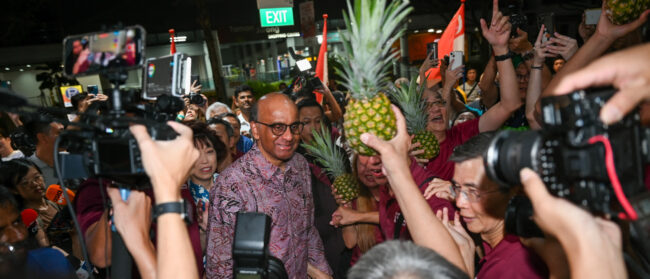Earlier this week, around 3,000 protestors in Kayah state marched in opposition to the statue of the assassinated general, who is considered a hero to the Bamar majority but has become a divisive figure to many of the country’s ethnic minority groups. The demonstrators were met by state police who fired rubber bullets, injuring at least 21 people. Charges were brought against 50 of the protestors, but state media has since reported that those are expected to be dropped.
Hunter Marston, a PhD candidate at Australian National University and an independent consultant specialising in Myanmar, breaks down why the statue is proving so controversial, and what it means for the future of Suu Kyi’s leadership.
How is this statue viewed by the Karenni people of Kayah, and why is it provoking such anger?
It is provoking anger for two reasons: First and foremost, General Aung San is the national independence hero of the Bamar majority. While the Karenni people of Kayah respect General Aung San, they do not feel that Aung San’s daughter Aung San Suu Kyi has implemented her father’s vision of national unity, and the Karenni people in Kayah State have their own independence heroes. Secondly, the people of Kayah are angry because they were not consulted on the plan to build the statue. The National League for Democracy (NLD) government announced plans to construct the statue and went ahead with it despite initial protests from local people. The move highlights the arrogance and dominant attitude of the NLD government, which represents the Bamar majority.
To what extent do these protests represent a growing divide between Myanmar’s various ethnic groups and the majority Bamar population?
I think it’s fair to say the protests are representative of a growing divide between Myanmar’s Bamar majority and various ethnic minorities. In this case, it’s clear the Karenni peoples are distrustful of Bamar motives, which they perceive as intended domination of their way of life and the desire to impose a unified history on the country’s struggle for independence.
In what ways does Aung San Suu Kyi’s status as Aung San’s daughter – a lineage that has arguably helped cement her support among the Bamar population – feed into this divide between her Bamar-majority supporters and the nation’s ethnic minority groups?
I believe that scepticism of Aung San Suu Kyi by ethnic minority voters across the country is rising. Many voted for her and the NLD in 2015 in the belief that she would work for the country’s political unity and represent the views of ethnic minority groups. Now, they feel let down and many will likely not vote for her party again in 2020.
What does the Myanmar government hope to achieve by erecting this statue?
It’s hard to say exactly. I think the NLD government hopes to propagate a Bamar-dominant narrative of Burma’s independence struggle by privileging its official line: General Aung San represents the spirit of the people, and the Bamar majority are the true representatives of the country. But also it wants to subsume the many competing ethnic visions under one umbrella of national unity to once and for all silence any voices of dissent that threaten to undermine Myanmar’s complicated ethnic mosaic.
What do you think will be the likely result of these protests?
Perhaps nothing. NLD spokesperson Myo Nyunt has equivocated by saying that there were also protesters in favour of the statue, so the government must determine what the people really want. That lays the ground for favouritism, and the NLD government may go ahead with building more statues across the country in order to privilege the views of the ethnic majority Bamar, despite fierce opposition by local peoples.

